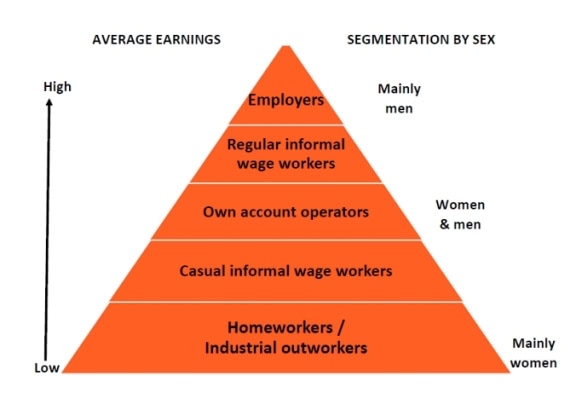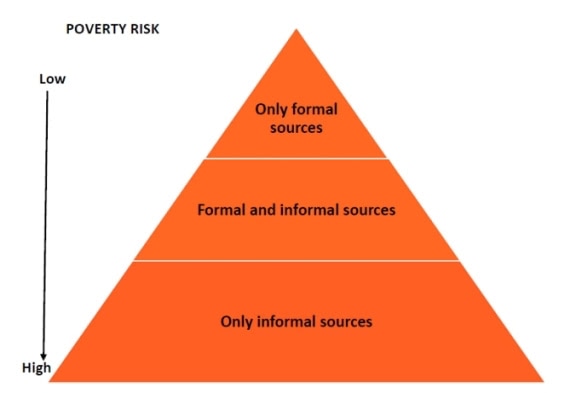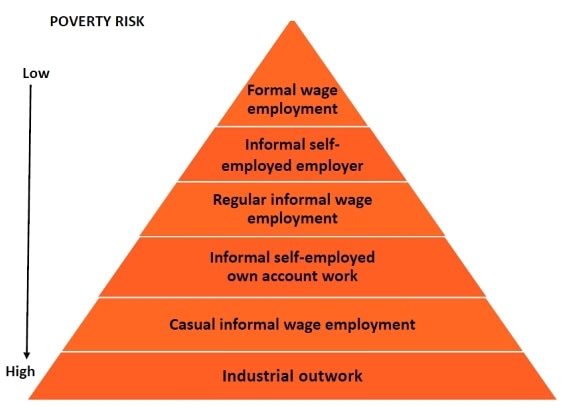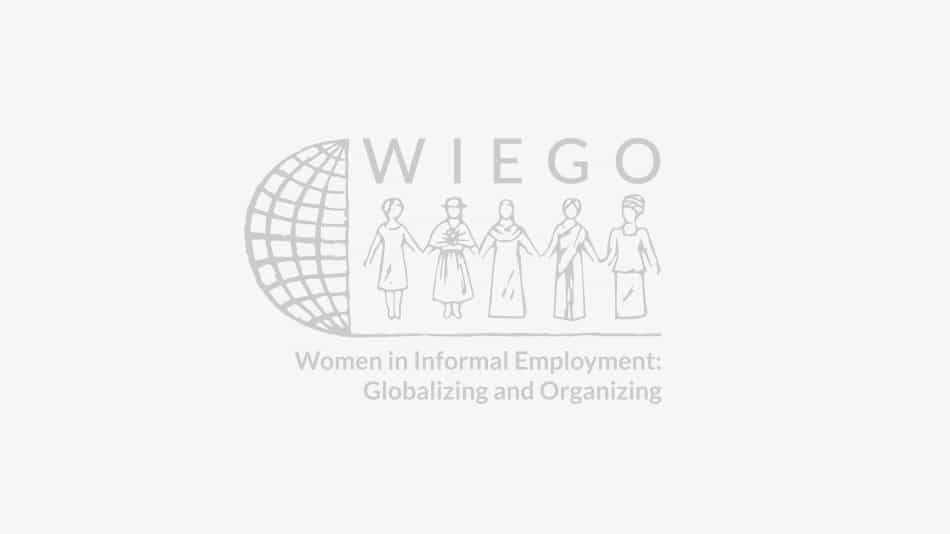A hierarchy of earnings and poverty risk exists within the informal economy. Average earnings are lower and the risk of poverty is higher among women working in the informal economy compared to men working in the informal economy.
The statistical evidence summarized in Links with Poverty indicates a hierarchy of earnings and poverty risk across the various segments of the labour force, as illustrated in Figures 1-3 below, adapted from Chen et al., 2005, Progress of the World’s Women 2005.
While average earnings are higher in formal employment than in informal employment, there is also a hierarchy of earnings within the informal economy. Employers have the highest average earnings, followed by their employees and other “regular” informal employees, then own account workers, followed by casual wage workers and domestic workers, and finally industrial outworkers.
Figure 1 presents the WIEGO model of a multi-segmented informal workforce and the links with income and poverty across the segments. Within this hierarchy, women are disproportionately represented in segments of the informal workforce with low average earnings. The fact that women tend to be under-represented among informal employers and “regular” informal wage workers and over-represented among industrial outworkers leads to a gender gap in average earnings and in poverty risk within the informal economy. Average earnings are lower and the risk of poverty is higher among all women workers in the informal economy compared to all men workers within the informal economy.
Fig. 1: Segmentation of Employment by Average Earnings and Sex

The hierarchy of poverty risk among households depends on whether households have some formal sources of employment income or are solely dependent on informal sources (Figure 2), and also on what type of employment is the primary source of household income (Figure 3). Figure 2 illustrates that households which rely solely on informal sources of employment income face higher poverty risk than those that have some formal sources of income. Figure 3 illustrates that households which depend on the most vulnerable forms of informal employment as their primary source of income are likely to have substantially higher poverty risk than those that have access to more stable and remunerative informal employment.
Fig 2: Poverty Risk of Households by Sources of Income

Poverty Risk of Households by Primary Source of Income

Source: Figures 1-3 are redrawn versions of those that appeared in Chapter 3 of the UNIFEM flagship publication Progress of the World’s Women 2005 (by Marty Chen, Joann Vanek, Francie Lund, James Heintz, Renana Jhabvala, Christine Bonner).
